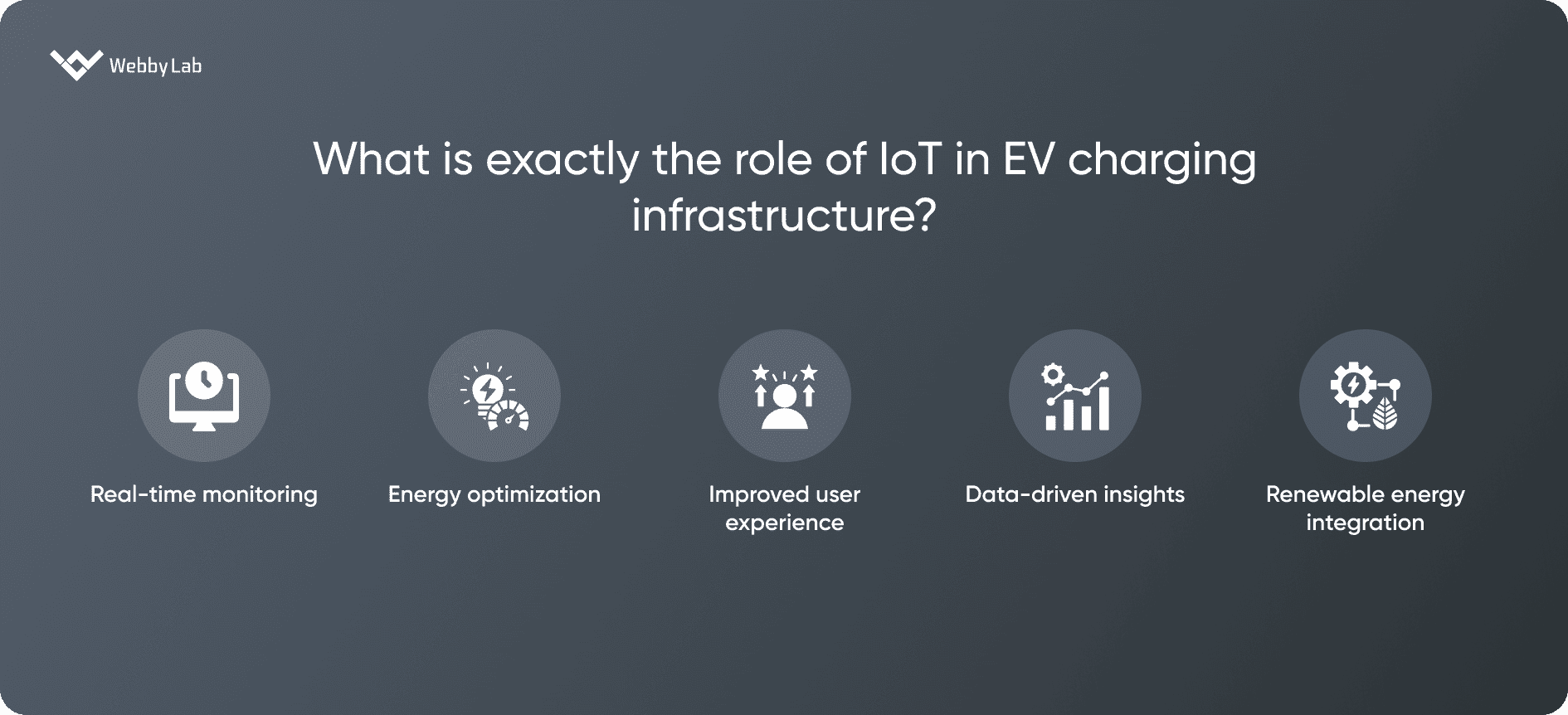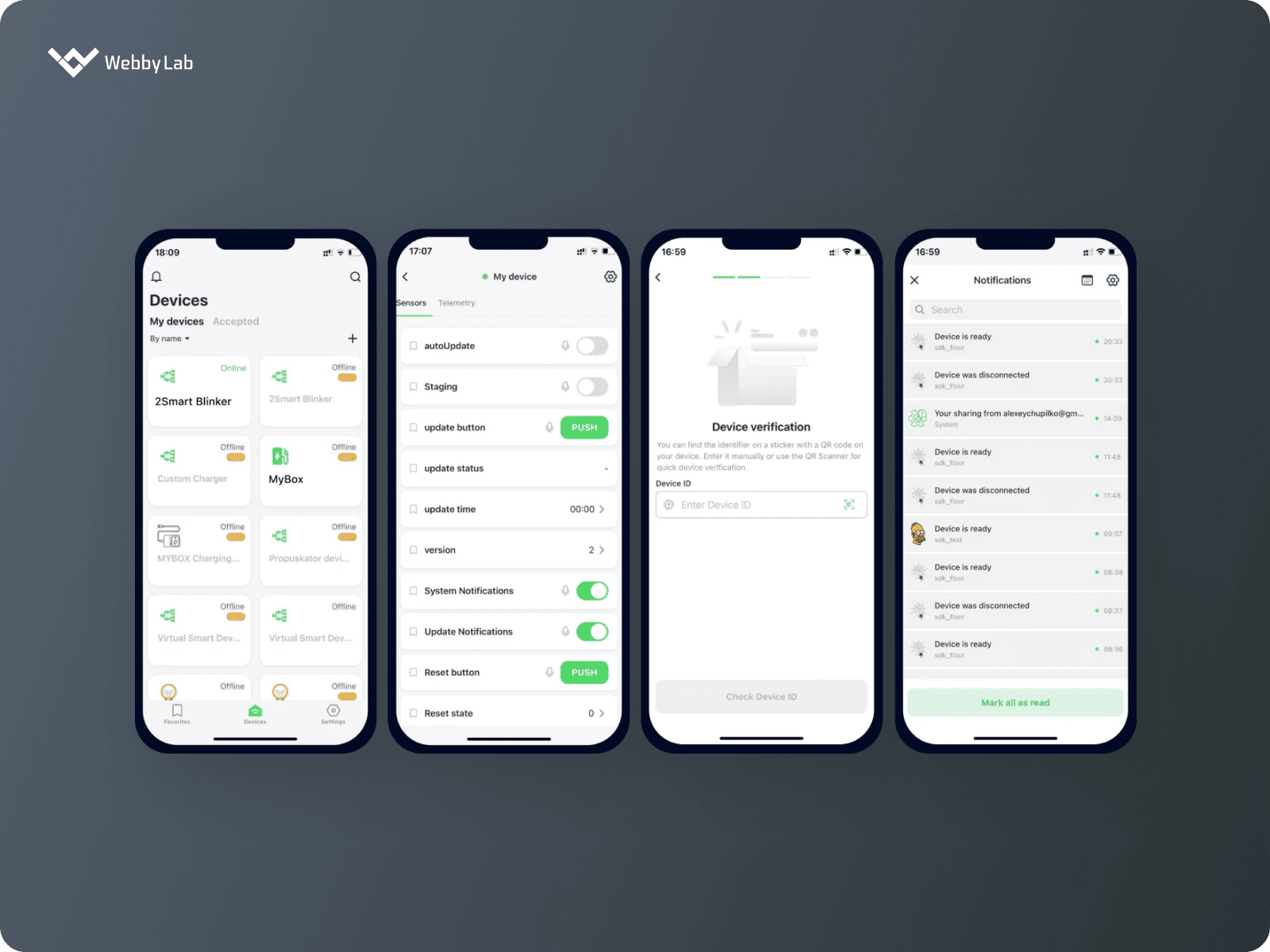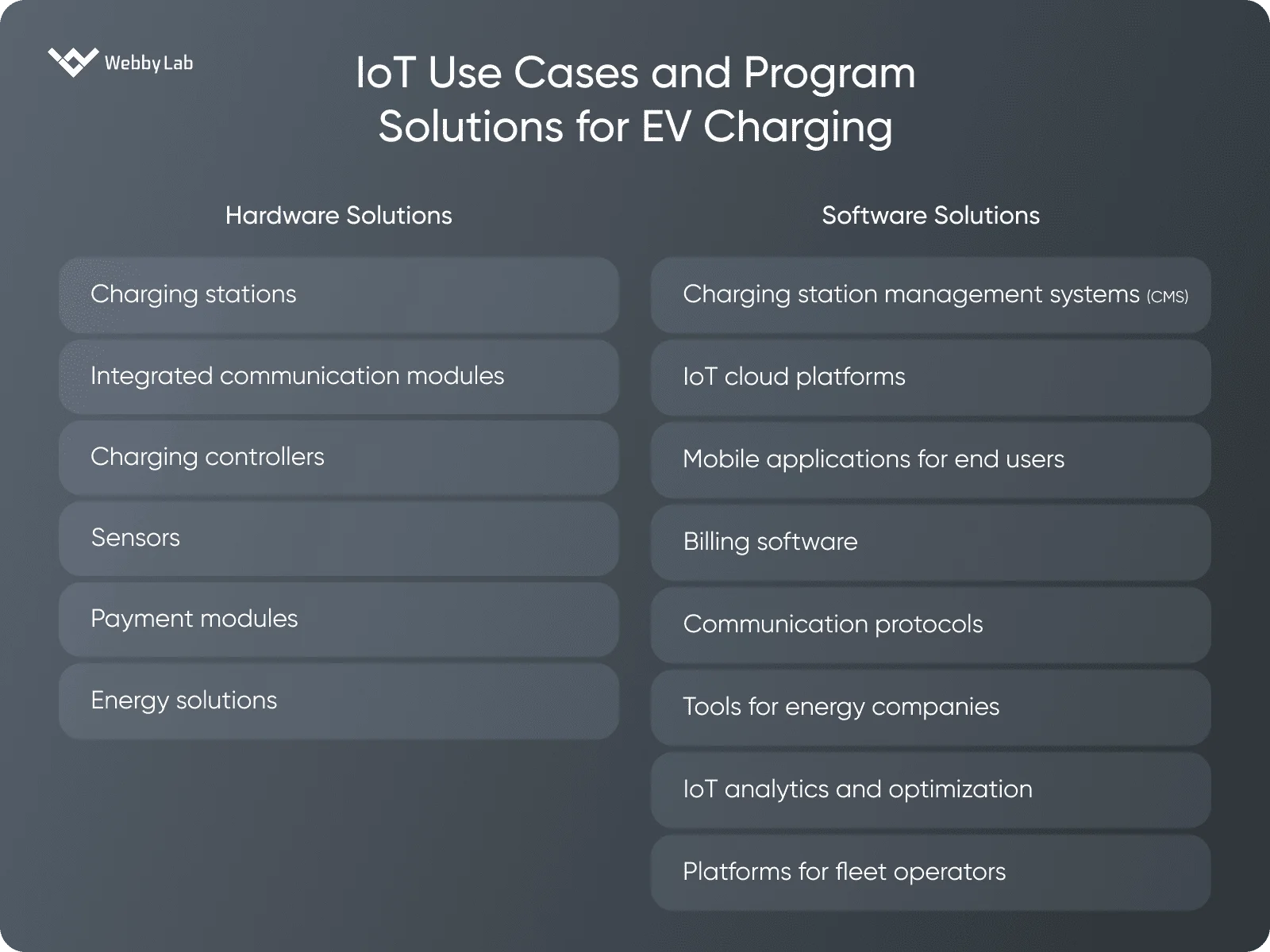How IoT is Revolutionizing EV Charging: Insights & WebbyLab’s Cases
Written by:

Kostiantyn Oliynyk
Head of IoT at Webbylab
With a robust academic background in Telecommunication Systems Engineering, I apply my knowledge to lead innovations in the IoT domain. Starting as the first team member in the newly formed IoT department at WebbyLab, I've spearheaded its growth, fostering the expansion into embedded and hardware development alongside our core software projects. My dedication lies in pushing the boundaries of IoT technology, fostering a culture of innovation and excellence that profoundly impacts our clients' operational success.
The integration of IoT in EV infrastructure allows for real-time monitoring, remote diagnostics, and automated updates — activities that cut down on maintenance costs significantly.
Using an app or a platform connected to IoT networks, you can track charging progress, reserve slots, and get real-time updates on charging status.
EV chargers ensure IoT connectivity for EV via Wi-Fi, LTE, 5G, or protocols like OCPP and MQTT.
It depends on your requirements and infrastructure complexity. For example, when delivering custom IoT solutions for EV infrastructure of our client, MyBox, we spent 11.5 weeks just on the initial stage. In fact, our collaboration has continued for over two years and is still ongoing.
Not necessarily, but many electric cars are part of the IoT ecosystem. They connect to chargers, apps, and IoT networks to improve performance and sustainability.















